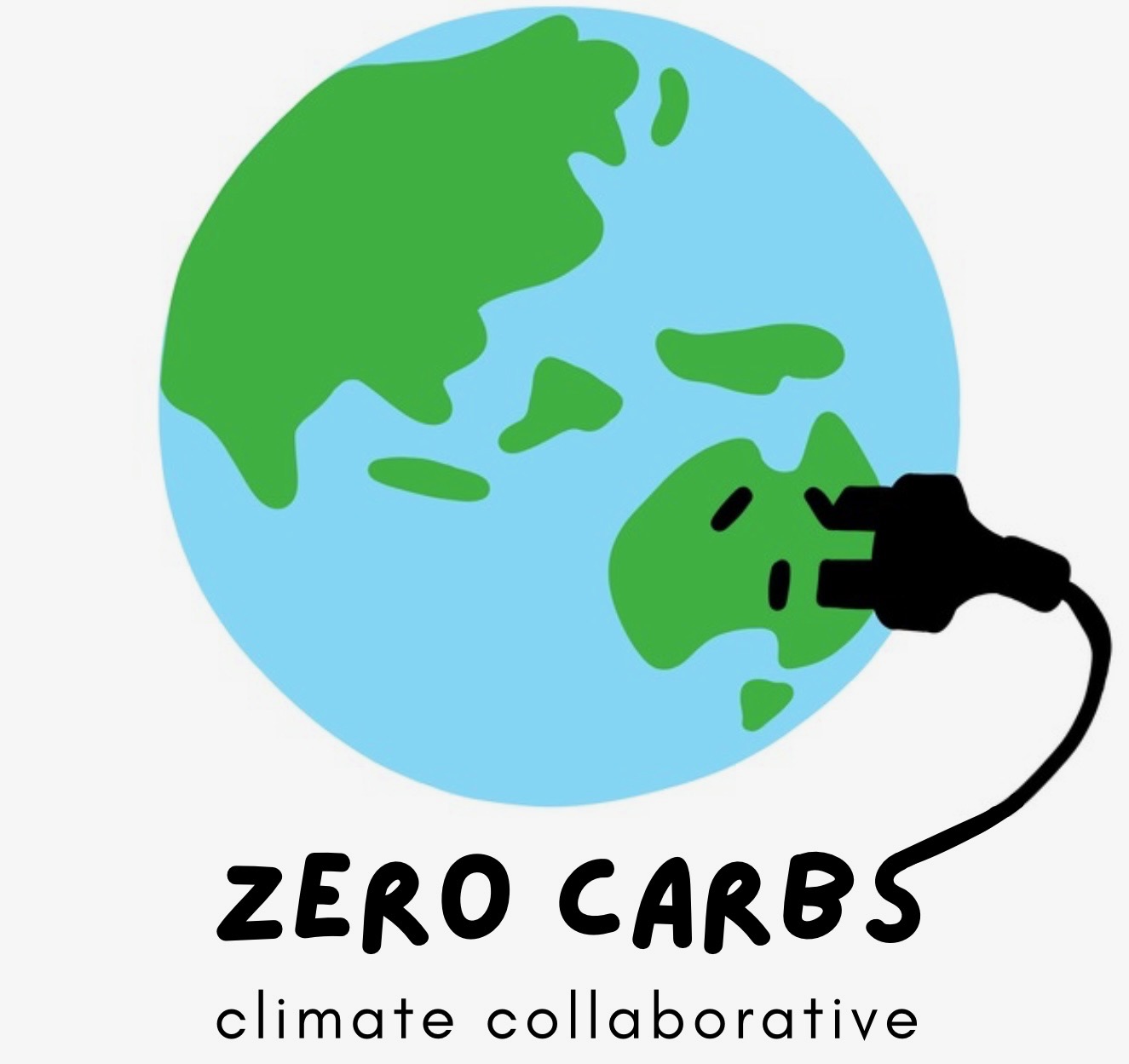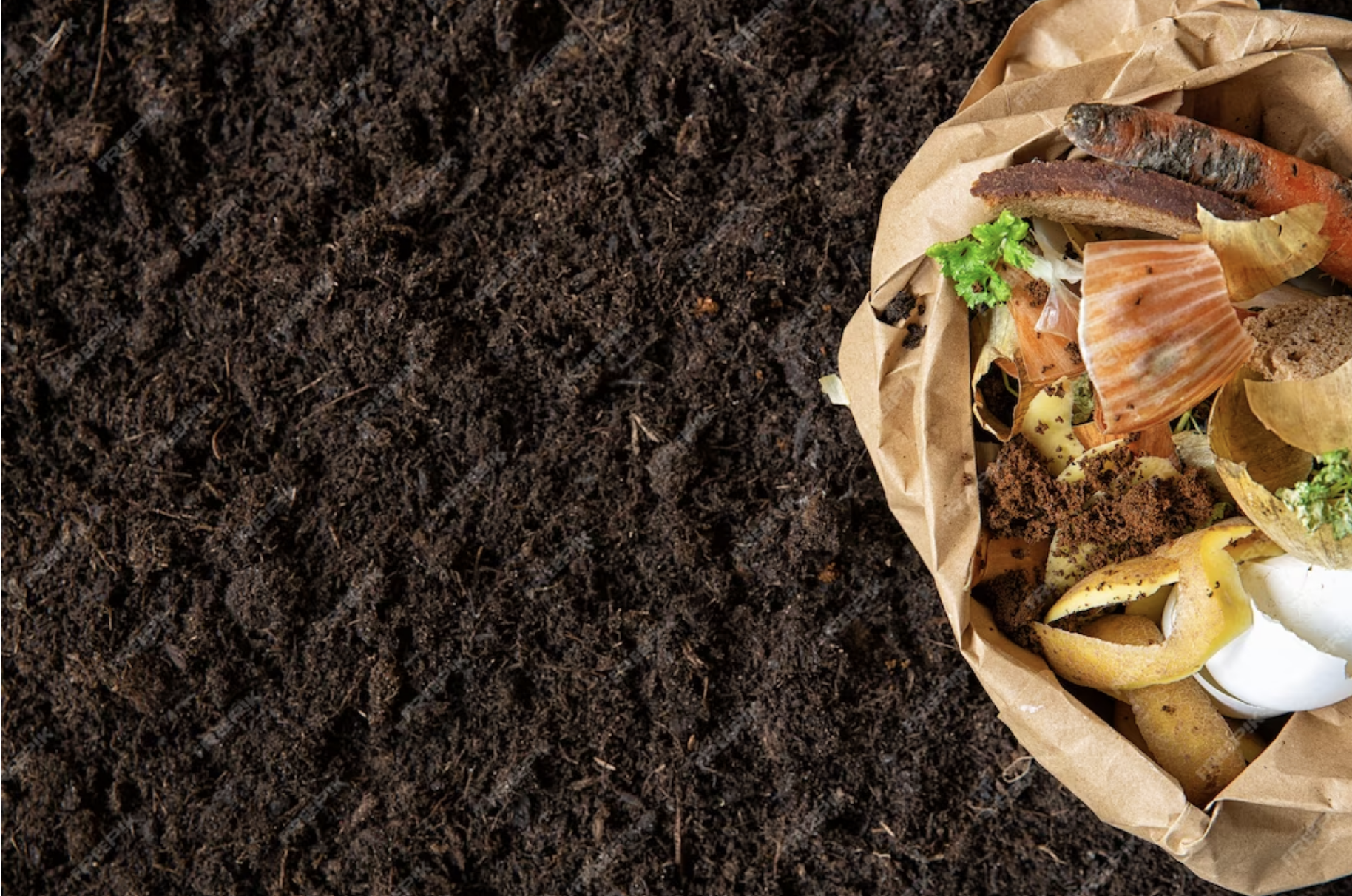
Why is composting so good?
Each year over half of our household garbage is made up of food and garden waste. Most of this organic waste can be recycled by composting it.
Organic material like food waste that is put in landfill without air causes over 3% of Australia’s total greenhouse gas emissions annually through the production of methane gas (which has 25 times the global warming potential of carbon dioxide).
By turning food scraps and organic garden waste into compost you can:
• Reduce the amount of organic waste going to landfill therefore preventing greenhouse gas emissions and leachate which can pollute land, groundwater and waterways.
• Improve soil quality and garden vitality by releasing rich nutrients into the soil. If you don’t have space for a garden, you can give your compost to a friend, neighbour or community
• Suppress plant diseases and pests, this reduces or eliminates the need for chemical fertilisers and manures helping you save money.
• When mixed into soil, helps retain moisture in your garden, this means you don’t have to water as often.
Some local councils are collecting kitchen waste as part of their waste collection process. Although a great initiative, even better is keeping your compost locally-made (in your garden or community). This reduces the need for transport, and eliminates the carbon-emitting energy required for waste collection, processing and packaging.
How do I compost at home?
There are many ways to compost at home, here are some examples of how to do it.
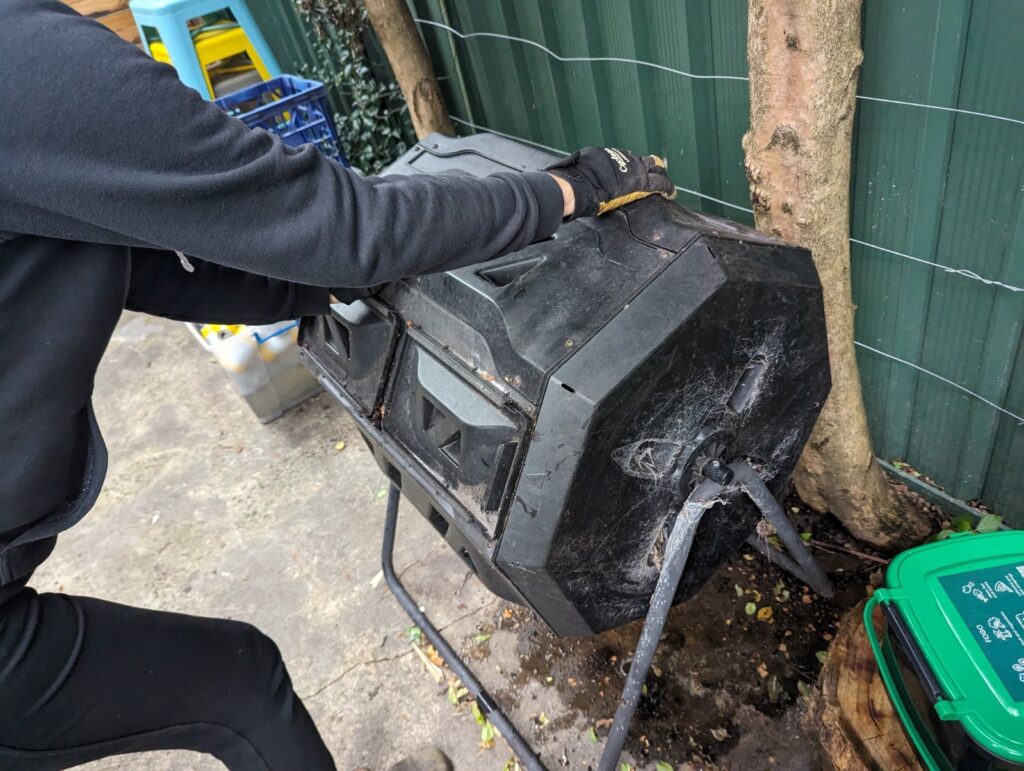
Jane’s Story
Inner West Sydney
I live in Marrickville and we have a small backyard area. There is plenty of space for a compost bin. When I first started composting I used this style of compost bin:
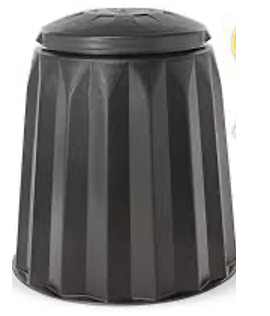
However even though I dug it into the ground, it ended up with a lot of cockroaches and rats getting in underneath it. I found it also a bit hard to keep it aerated and turned.
I looked for a better design that suited my needs and found this compost bin, it has been fantastic! It’s a Viviendo 160L Twin Chamber Tumbler Rotating Compost Bin.
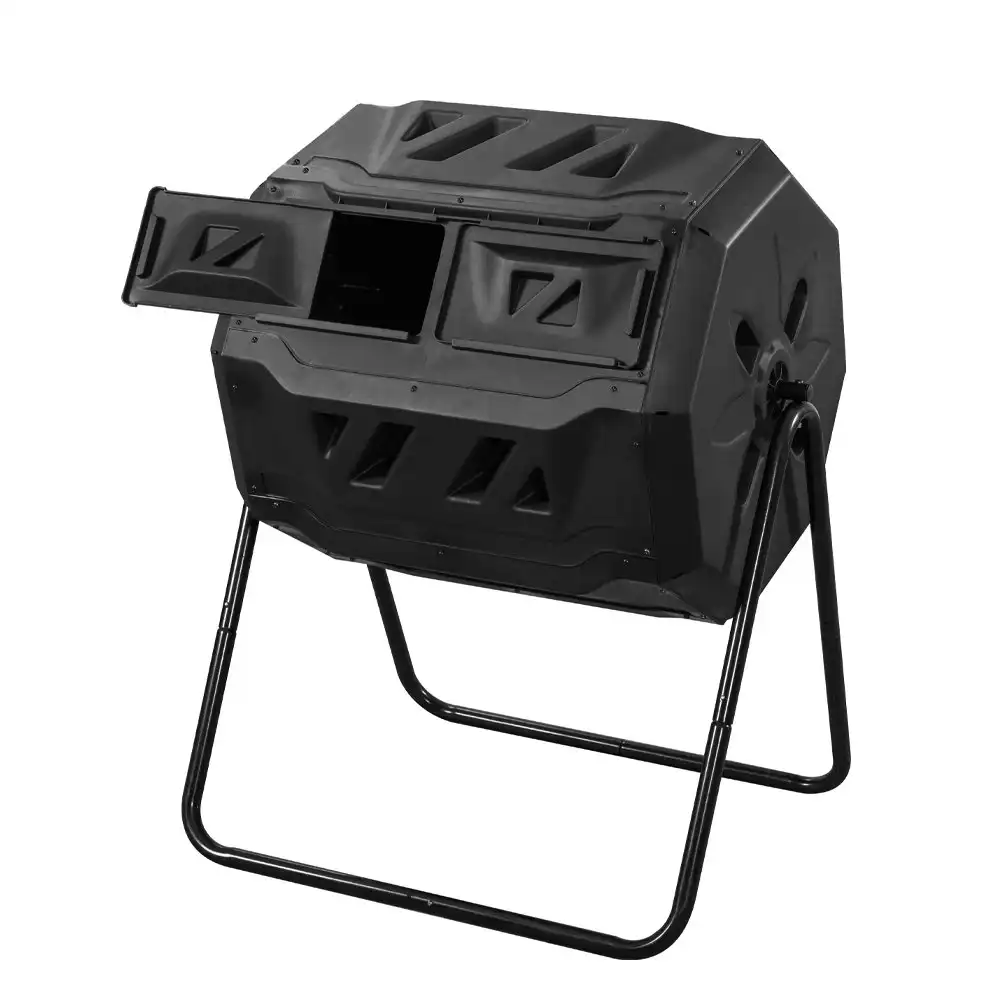
We have a small bucket with lid in the kitchen that we add most of kitchen waste into. Every couple of days I empty the bucket into the compost.
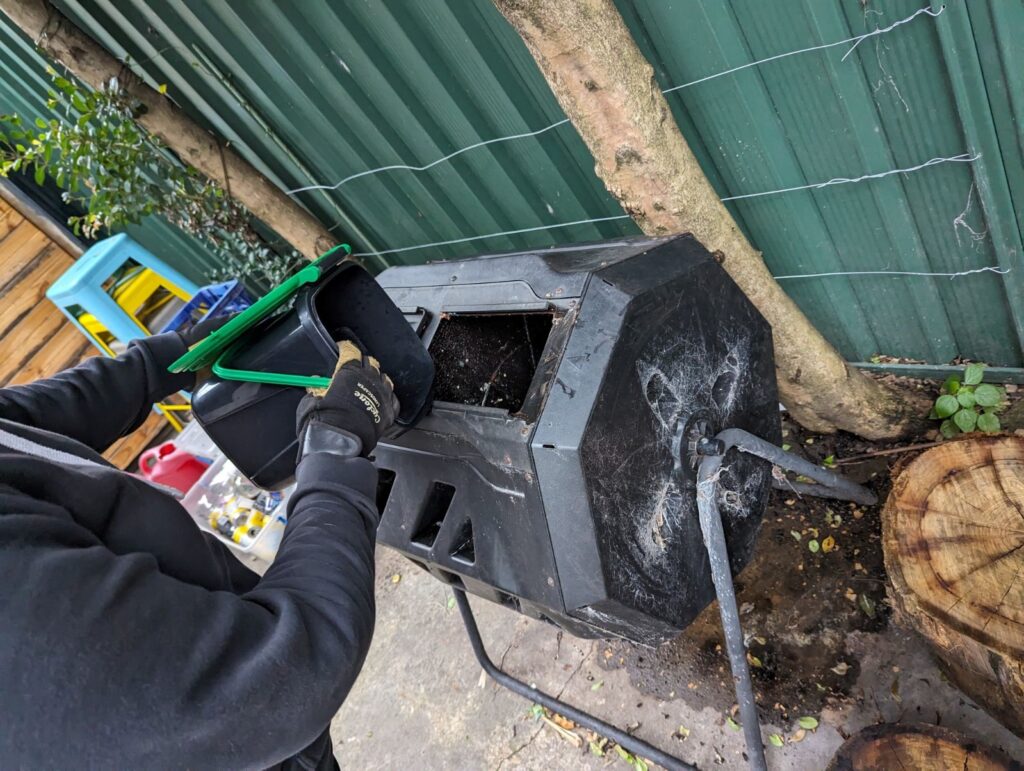
The compost bin has two compartments so while one side is filling up the other side is full and breaking down, ready to be used in the garden. When the compost is ready, it’s easy to empty and we then just dig it into our garden. Then the whole cycle starts again.
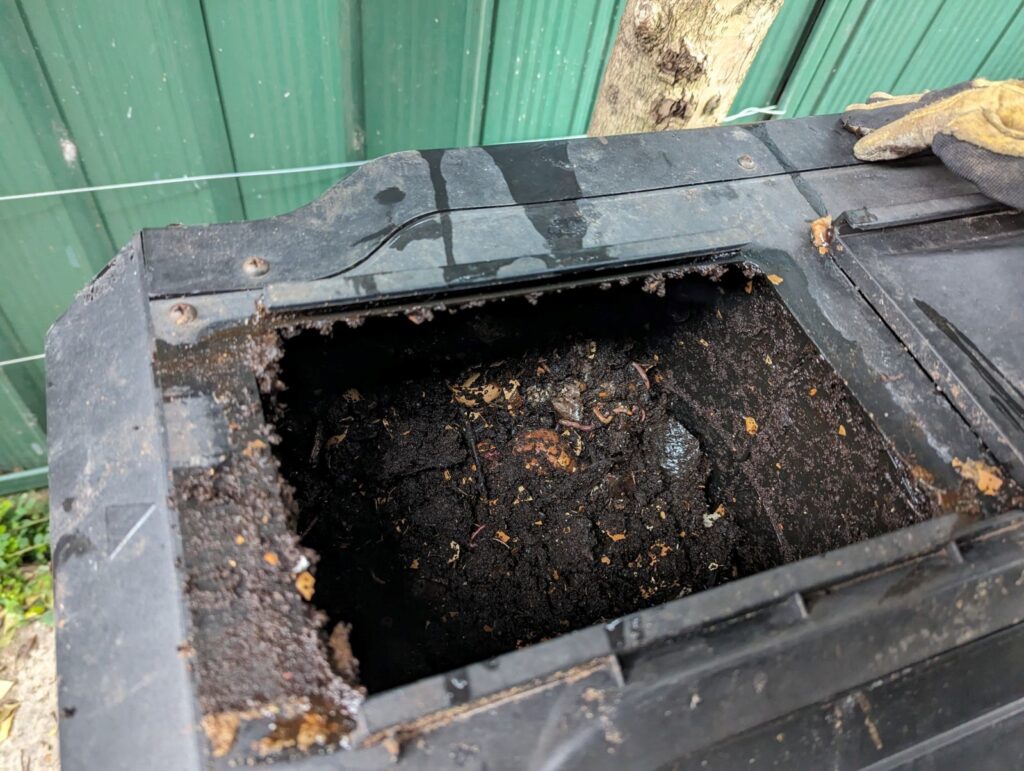
Composting is fun and easy. Every household can do it!
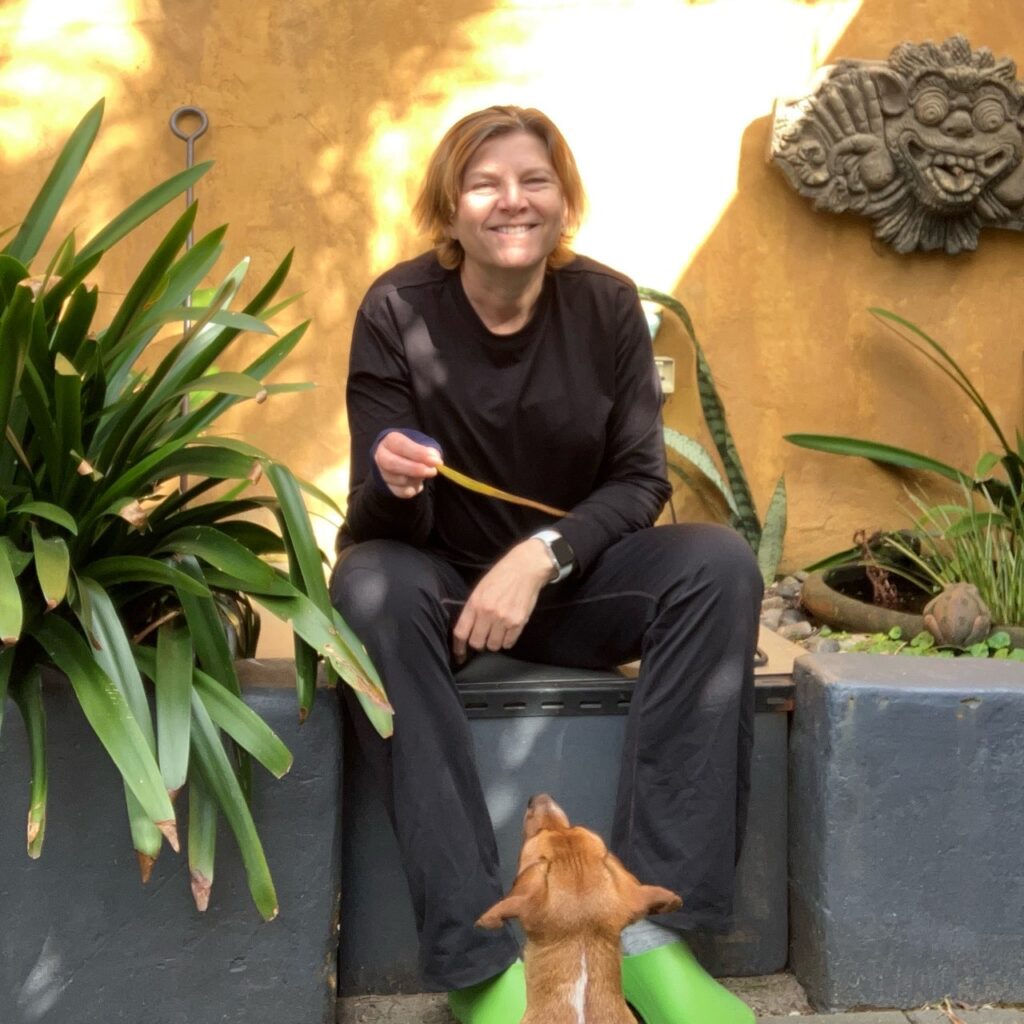
Val’s Story
Inner West Sydney
I grew up composting at home with my mother’s lead, and continued when I left home aged 18. Once I bought a home, I built this raised garden bed with inbuilt compost bin (about 30 years ago).
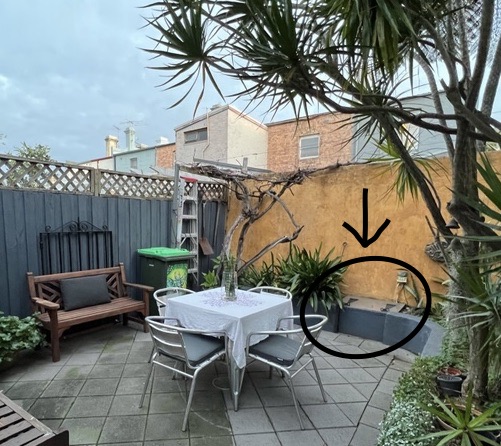
The base of the compost bin is made from rescued autoclaved aerated concrete (AAC) building blocks from Reverse Garbage in Marrickville.
The first hinged lid I made with reclaimed wood and gate-hinges. This worked for 30 years, although I replaced it a couple of times as it did weather. As I used waste wood and reused the hinges each time it was easy, and free, to do.
Of course eventually those pesky (and cute, we do like them) rats, over the years, learned how to chew into the wood. You can see below how they gnawed the finger holes until they could fit in. Not a big problem- just need to keep one step ahead of them, eg block the holes, and they’ll go elsewhere.
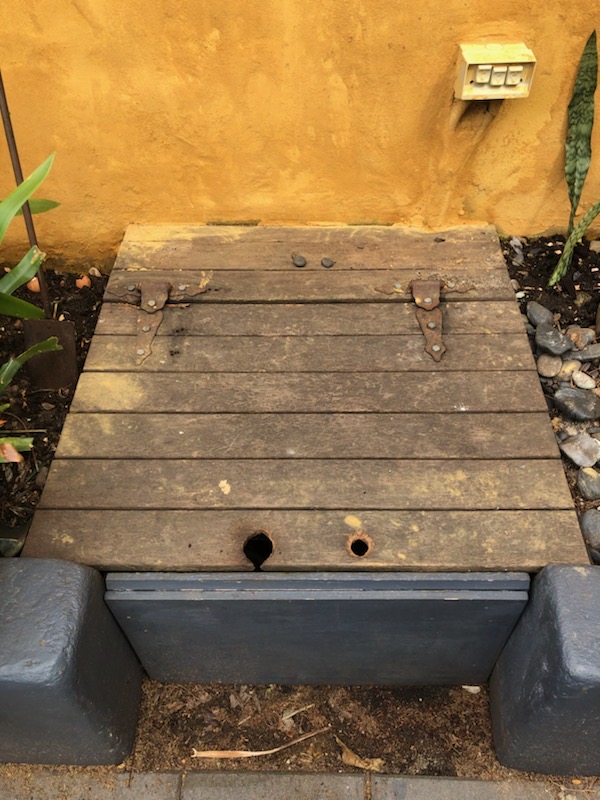
Pesky rat holes
The latest lid incarnation is this custom hand-made stainless steel lid which is as rat proof as they come! It was free as a friend made it for me in their factory- pays to know the right people! But a scrap of metal attached to the old hinges with rust-proof rivets would have also sufficed.
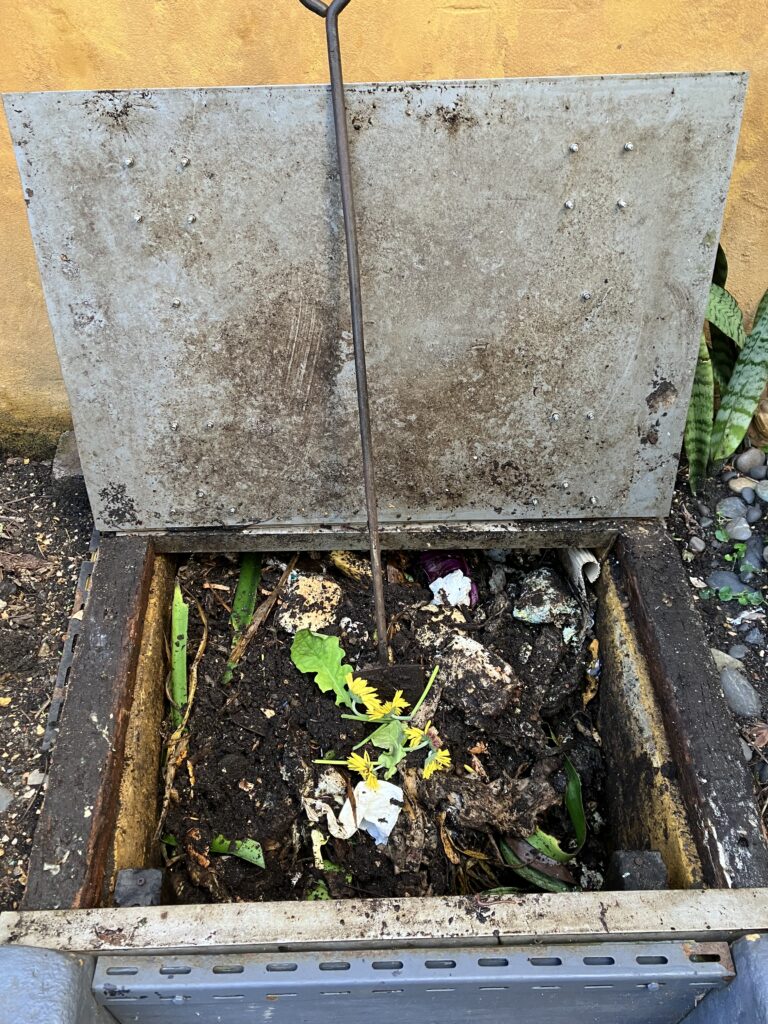
Sorted- rat proof metal lid
Much of my household waste goes in here- food scraps, garden clippings, kitchen paper, egg cartons (plastic label removed)- I even rip open my tea bags and empty the tea leaves in the compost- many tea bags contain plastic and cant go in the compost.
If I’m doing a big garden clean up I do resort to the council green bin instead. That amount of plant material just can’t fit in my own system, and takes too long to break down in the home compost.
My compost bin has a natural ecosystem that just runs itself. Like magic, our household kitchen and garden waste shrinks in no time, and turns to rich, black, crumbly soil. I make so much I often give it away via pay-it-forward forums, or to friends and family.
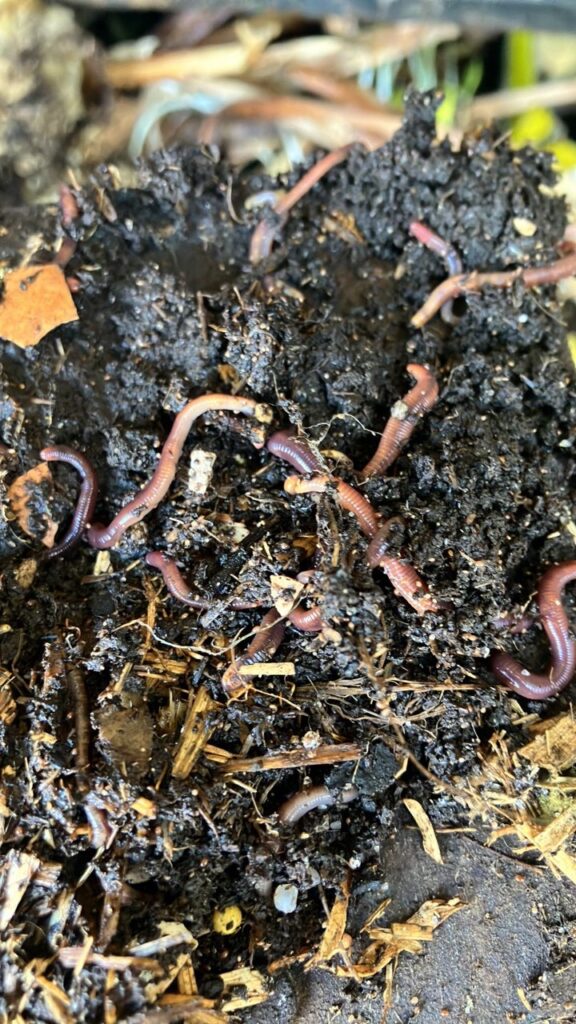
Actual photo of earthworms that moved into my compost- no need for a worm farm
